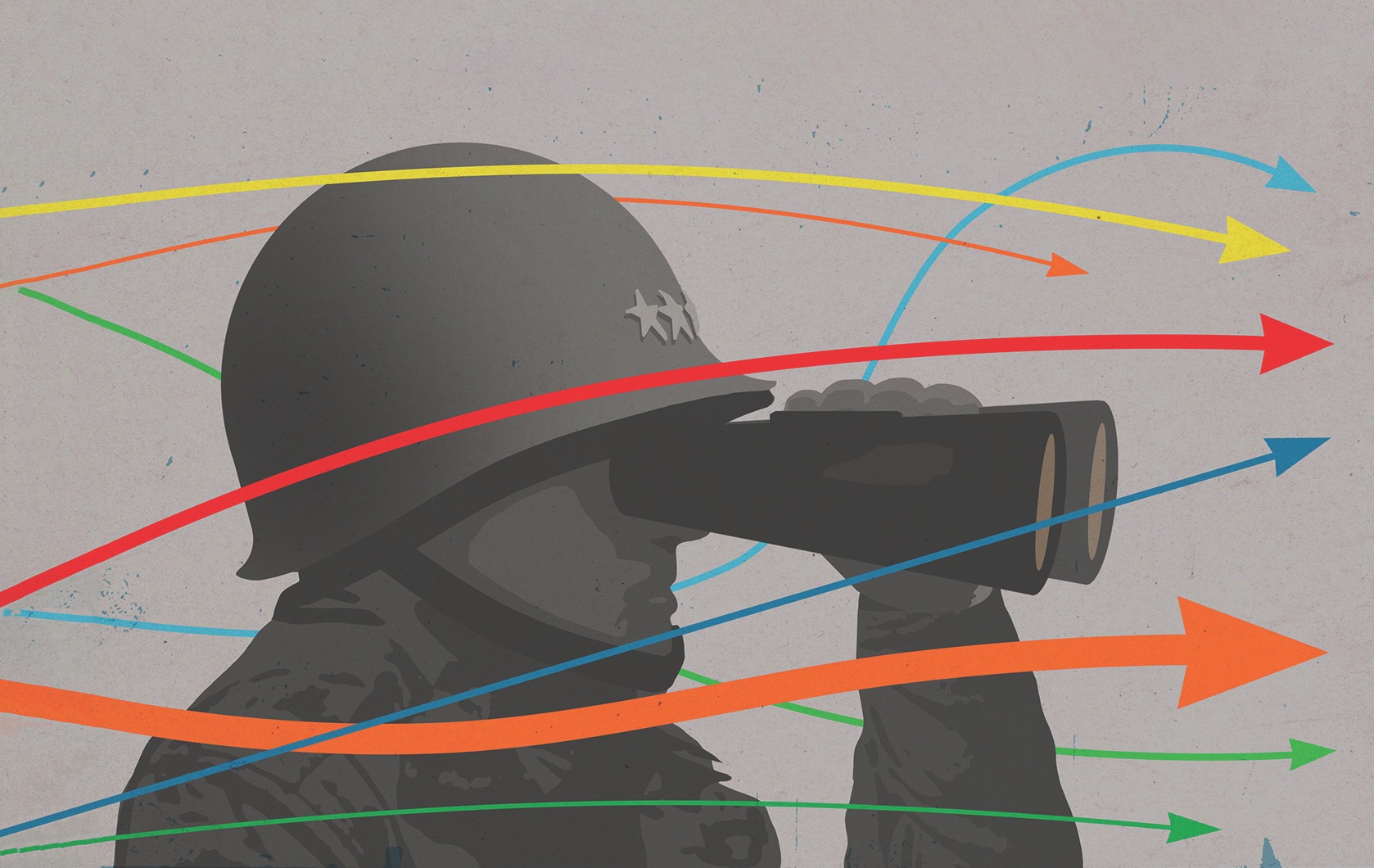I’ve been poring over General George S. Patton’s diaries recently and discovered how fascinating they are when read at a gallop. His worries, his bouts of anger and frustration, are all part of the mix along with his braggadocio and boasting. Yet reading his words, what struck me most was Patton’s understanding of the operational art of war.
War is fought on three levels: strategic, tactical, and operational. The strategic level refers to the overall aims—the cross-Channel invasion, smashing the Luftwaffe, and so on—while the tactical level relates to the kinetic: the actual fighting. The operational level is the glue that binds the two: supplies, factories, shipping, and organization. I’ve long maintained that this latter, less glamorous, level is too often left out of the narrative. In most books or documentaries, we get lots about what it was like at Eisenhower’s headquarters or what Roosevelt was thinking, and we get a great deal about what it was like jumping out of a landing craft or being a ball turret gunner in a B-17. Of the nuts and bolts of war, however, there is a lot less.
This extends to how we view Patton. He has been widely lauded for his tactical genius: the hard-driver of men and an armor expert with more swagger than any other Allied general. Sometimes, though, it’s good to pause and take a step backward. Let’s think about where this reputation comes from. In southern Tunisia he commanded II Corps for a very short time and was kept on a tight leash by the commander of the Allied forces there, Britain’s General Harold Alexander. In Sicily, Patton’s forces swept westward at lightning speed against very weak, almost non-existent Italian opposition. Later in the campaign, when confronting the Germans in the northeast of the island, his troops were no quicker than the British and Canadians (well, perhaps an hour quicker). In France, the tough work had already been done by the First Army, which also achieved the decisive breakthrough. Thereafter, Patton’s Third Army was able to clean up because, once again, the opposition was very weak. He came to a halt at the Moselle River as German defenses stiffened and his supply lines became overstretched.
Don’t get me wrong. I’m not for a moment disputing Patton’s tactical acumen, but I would suggest that what lay behind the sweeping gains in Sicily and then France was operational brilliance. In Sicily, the Seventh Army was the first field army the U.S. had put into action in the war—yet within a week of landing, Patton had created a new corps, an all-arms mechanized force, that was able to advance more than 100 miles in a matter of days. That doesn’t just happen with a click of the fingers. That requires deep understanding and sublimely good staff work—by a team that Patton put together. The same was true of the Third Army’s drive through Brittany and their turn east to the Moselle, some 350 miles away.
By the second week of September 1944, all Allied armies in the West had made similarly large strides through France and into Belgium. At that point they ran out of steam. Patton lobbied for the Third Army to be given priority for diminishing supplies in order to cross the Moselle and smash the German border defenses at the Siegfried Line, but was overruled. This prompted him to go on the defensive and focus all the more on preparation. Patton very sensibly did not consider launching a major offensive unless he had overwhelming amounts of men and supplies to guarantee success. So he began bringing up bridging equipment and large numbers of engineers, and instigated intensive training. This was not tactical chutzpah, but methodical and painstaking operational planning. And the subsequent capture of the northeastern French city of Metz, the help his forces provided in the Ardennes, and the later crossing of the mighty Rhine were as much to do with planning and preparation—the operational art—as with tactical dash. Patton’s tactical flair, in fact, was only possible because of his operational skill. It’s time, I think, to reconsider Patton afresh. ✯






